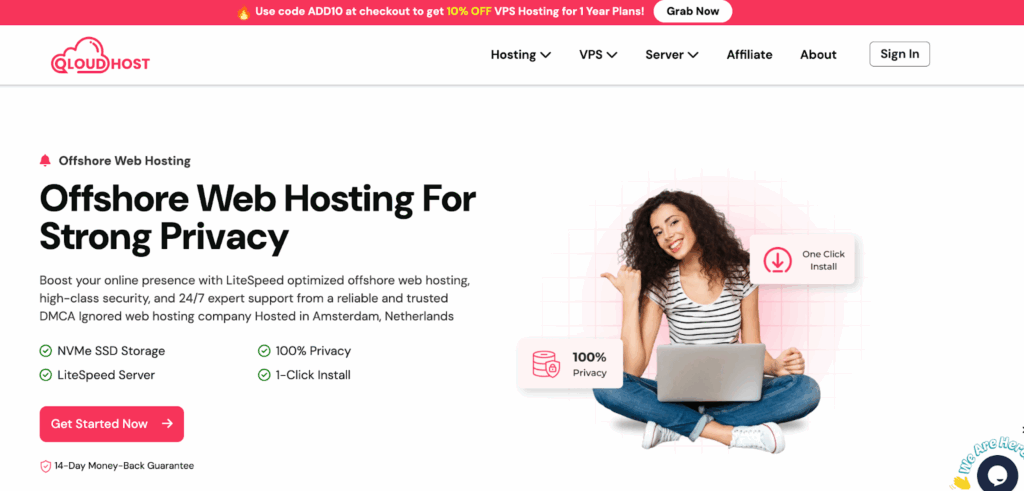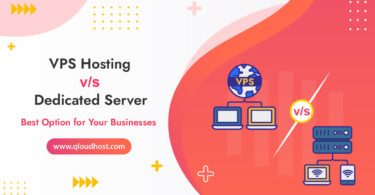Blogging isn’t just about writing, it’s about sharing your thoughts, passions, and experiences with the world. And guess what? You don’t need to be a tech wizard or a professional writer to get started. With the right tools and a little guidance, anyone can launch a blog in the Netherlands and reach thousands of readers.
Why start a blog in Netherlands? Because local content matters! Dutch readers love relatable content, whether it’s about exploring Amsterdam’s hidden gems, tips for Dutch startups, delicious stroopwafel recipes, lifestyle hacks, or even education and career advice. By focusing on the Netherlands, you’ll instantly stand out and create a strong connection with your audience.
The good news? Starting a blog today is super simple. All you need is a catchy domain name, reliable hosting, and an easy platform like WordPress. From there, it’s all about choosing your niche, writing content that people love, and learning how to promote your blog. And ye,s monetising your blog is very possible (think ads, affiliate links, sponsored posts).
This step-by-step guide will show you exactly how to start a blog in the Netherlands in 2025, covering everything from setting up your site to growing your audience. Whether you’re a student, a traveller, an entrepreneur, or just someone with a story to tell, blogging can be both fun and profitable.
What Do You Need to Start a Blog in the Netherlands in 2025?
Starting a blog in the Netherlands has never been easier, but before you dive in, it’s important to know the essentials that set a successful blog apart from the rest.
Whether you want to write about Dutch lifestyle, share travel experiences across Amsterdam and Rotterdam, or build a business blog, here’s exactly what you need to get started:

1) Pick a Blogging Niche
Choose one clear topic so Google (and readers) know exactly what your blog is about.
2) Choose a Domain Name
Your domain is your brand. Keep it short, memorable, and easy to spell.
Avoid using numbers or special characters in your domain name. You can register domains from trusted providers like Namecheap or GoDaddy. A simple, memorable domain not only makes your blog easier for readers to remember but also gives it a polished and professional identity.
3) Get Reliable Web Hosting
When starting a blog in the Netherlands, selecting a reliable and secure web hosting provider is one of the most important steps. Quality hosting ensures your blog loads quickly for Dutch and European visitors, stays online with minimal downtime, and keeps your data safe.
For beginners, QloudHost Shared Hosting is a great choice. It’s affordable, easy to use, and comes with free SSL certificates along with 99.99% uptime.

QloudHost also provides one-click WordPress installation, so even if you’re not technical, you can set up your blog in minutes. With fast servers located in Europe and responsive support, it’s an excellent option for anyone looking to start a blog in the Netherlands.
Steps to Buy Hosting from YouStable:
For Fast, local hosting improves UX and rankings.
4) Install a Blogging Platform
Step 1: Prep your hosting
Step 2: One-click WordPress install (recommended)
Manual fallback: Upload WordPress via File Manager/SFTP, create a MySQL DB/user, run the installer at /wp-admin/install.php, paste DB credentials.
Step 3: Secure the basics
Step 4: Core settings for SEO & NL audience
Step 5: Pick a lightweight theme
Step 6: Install only essential plugins (keep it lean)
Step 7: Create must-have pages
Step 8: Performance & CDN
Step 9: Connect analytics & indexing
5) Essential Plugins & Tools
To grow your blog in the Netherlands, you’ll want a few powerful plugins and tools—but keep things light so your site stays fast and secure. Here are the must-haves:
6) Design Your Blog
First impressions matter! A clean and modern design makes your blog more enjoyable to read and keeps visitors coming back. Always aim for a mobile-first design, since most readers in the Netherlands (and worldwide) browse on their phones.
Pick a fast and lightweight theme like Astra, GeneratePress, or Kadence—these are easy to customize, SEO-friendly, and won’t slow down your site.
Keep things simple:
To make your blog more engaging, add reusable elements like:
7) Write Content & Promotion Strategy
Creating a blog isn’t just about launching a website—it’s about consistently publishing valuable content and making sure the right people see it. A solid content and promotion strategy will help your blog in the Netherlands grow faster, attract loyal readers, and rank higher on Google.
Step 1: Build a Content Plan
Start by mapping out 3–5 pillar pages—these are long, in-depth guides that cover the main topics of your blog. For example:
From there, create cluster posts around each pillar. These are shorter, supporting articles (e.g., “How to Apply for Dutch Health Insurance as an Expat,” “Top 10 Websites for Student Housing in Utrecht”). This “pillar + cluster” model improves internal linking and helps Google understand your site’s structure.
Step 2: Follow On-Page SEO Basics
Every blog post should follow a few golden rules:
Step 3: Promote Your Content
Publishing is only half the job—promotion is where growth happens. Focus on both Dutch and international channels:
Step 4: Build an Email List Early
Don’t wait until you have thousands of visitors. Add a simple email subscription box (using MailerLite, Brevo, or ConvertKit) and start sending a weekly or bi-weekly digest. Share new blog posts, tips, and local updates. Over time, your email list becomes your most loyal traffic source.
Step 5: Be Consistent
Success doesn’t come from publishing once and waiting. Aim for a clear rhythm:
If you’re starting a new blog, one of the most important things to focus on after setup is website speed and performance. A fast blog not only keeps visitors engaged but also improves your Google rankings. To dive deeper, check out our detailed guide on how to improve website performance where we share practical tips to boost speed, security, and overall user experience.
8) Monetization
Once your blog in the Netherlands starts attracting consistent traffic, it’s time to turn readers into revenue. Monetization doesn’t happen overnight, but with the right strategy, your blog can become a reliable income stream. Here are the most effective methods:
1. Display Ads
The easiest way to start earning is by placing ads on your blog.
2. Affiliate Marketing
Recommend products or services and earn a commission when readers make a purchase. Popular affiliate networks in the Netherlands include:
3. Sponsored Posts & Partnerships
Once your blog has authority, brands will pay for exposure.
4. Digital Products & Services
This is where your profit margins are highest because you own the product. Examples include:
5. Memberships & Subscriptions (Optional)
Offer exclusive content behind a paywall. For example:
Monthly subscription for in-depth guides, private newsletters, or templates.
Choosing the right control panel is a crucial step in managing your hosting environment effectively. Whether you are setting up a new website, running multiple client sites, or optimizing your server, understanding the differences between Plesk and cPanel can save you time, enhance performance, and improve security. For a detailed, up-to-date comparison of these two industry-leading control panels, including their features, pricing, CMS support, and performance insights, check out our comprehensive guide on Plesk vs cPanel. This resource is perfect for anyone looking to make an informed decision before selecting a control panel for their hosting needs.
If you’ve confirmed your internet is working, but a specific website still looks broken, won’t load properly, or shows you outdated information, the culprit is almost always your browser’s cache. Your browser is likely holding onto an old, “stale” version of the site’s files. Forcing it to download a fresh copy is the next logical step. We have a complete, step-by-step guide on how to clear the Safari browser cache on your Mac that will walk you through the correct and safest way to do it.
Choosing the right server CPU can dramatically impact your website’s speed, stability, and scalability. Learn more about the latest Intel Xeon and AMD EPYC processors in our comprehensive article on Intel vs AMD, where we cover full comparisons, performance benchmarks, and recommendations for modern web hosting setups.
FAQ’s – How to Start a Blog In Netherlands?
Do I need a .nl domain to start a blog in the Netherlands?
No, you don’t need a .nl domain to start a blog in the Netherlands, but it’s highly recommended. A .nl domain helps build trust with Dutch readers, improves your visibility in local Google search results, and shows that your content is tailored for a Netherlands-based audience.
If your blog targets an international audience, then a .com or other global extension works just fine. However, for expats, local businesses, or culture-specific blogs, a .nl domain gives you a strong SEO and branding advantage in the Dutch market.
Is blogging profitable in the Netherlands?
Yes, blogging can be profitable in the Netherlands if you approach it with the right strategy. The country has a strong digital culture, high internet penetration, and a large audience that consumes both Dutch and English content. Bloggers here make money through multiple channels including Google AdSense, affiliate programs like Bol.com Partnerprogramma, Awin, and TradeTracker, as well as sponsored collaborations with Dutch brands. Selling digital products such as ebooks, itineraries, or online courses is also a growing income stream.
Profitability depends on factors like niche selection, SEO, and consistency. High-demand topics such as travel, expat lifestyle, personal finance, and business attract more traffic and higher-paying partnerships. While most blogs don’t earn much in the first few months, steady growth in content and audience engagement can turn blogging into a reliable side hustle or even a full-time income within 12–18 months.
Which is the best hosting for blogging in the Netherlands?
The best hosting for blogging in the Netherlands is QloudHost WordPress Hosting. With fast European servers, 99.99% uptime, free SSL, and one-click WordPress installation, QloudHost ensures your blog loads quickly, stays secure, and is easy to manage. It’s affordable, beginner-friendly, and perfectly optimized for bloggers in the Netherlands.
Do I need technical skills to start a blog in the Netherlands?
No, you don’t need technical skills to start a blog in the Netherlands. Thanks to beginner-friendly platforms like WordPress, setting up a blog is as simple as choosing a domain, selecting hosting, and using a one-click installer. With QloudHost WordPress Hosting, you can launch your blog in minutes—even without coding or web design knowledge.
Most of the setup, including themes, plugins, and updates, can be managed with a few clicks. As your blog grows, you can learn SEO, content writing, and promotion strategies, but the technical side is already taken care of by the hosting and platform. This makes blogging accessible to anyone, students, professionals, or entrepreneurs, without a tech background.
How long does it take to make money from blogging in the Netherlands?
Making money from blogging in the Netherlands usually takes time and consistency. Most new blogs earn little to nothing in the first 3–6 months, as this is the period where you’re building content, optimizing for SEO, and growing your audience. Once you start getting steady traffic, monetization through ads, affiliate marketing, or sponsored posts becomes possible.
With consistent publishing, good SEO, and smart promotion, many bloggers see their first meaningful income within 6–12 months. For long-term profitability, especially through affiliate programs like Bol.com Partnerprogramma or sponsored collaborations, expect 12+ months of effort. Blogging is not a quick-rich scheme, but with patience and the right strategy, it can become a steady income source in the Netherlands.
Conclusion – How to Start a Blog In Netherlands?
Blogging with a country-specific focus is one of the best ways to share knowledge and build a loyal audience. When you start a blog in the Netherlands, you connect with readers who value content tailored to Dutch culture, lifestyle, and everyday experiences. From choosing the right .nl domain and reliable hosting to publishing SEO-friendly posts and promoting them effectively, every step plays a role in your success.
Netherlands-focused blogging also opens doors to multiple monetization opportunities such as Google AdSense, affiliate programs (like Bol.com Partnerprogramma, Awin, or TradeTracker), sponsored collaborations, and selling digital products. With consistency, creativity, and patience, your blog can grow into both a personal brand and a profitable business.
Thanks to QloudHost WordPress Hosting, starting a blog in the Netherlands has never been easier. It’s affordable, beginner-friendly, and comes with all the essentials—fast servers in Europe, free SSL, one-click WordPress installation, and 99.99% uptime. Take the first step today and launch your blog in the Netherlands to share your ideas, insights, and stories with readers across the country.




![How to Avoid DMCA Notices In [current_date format='Y']? Step-by-Step Guide How to Avoid DMCA Notices](https://qloudhost.com/blog/wp-content/uploads/2025/12/How-to-Avoid-DMCA-Notices-375x195.jpg)
Leave a Comment